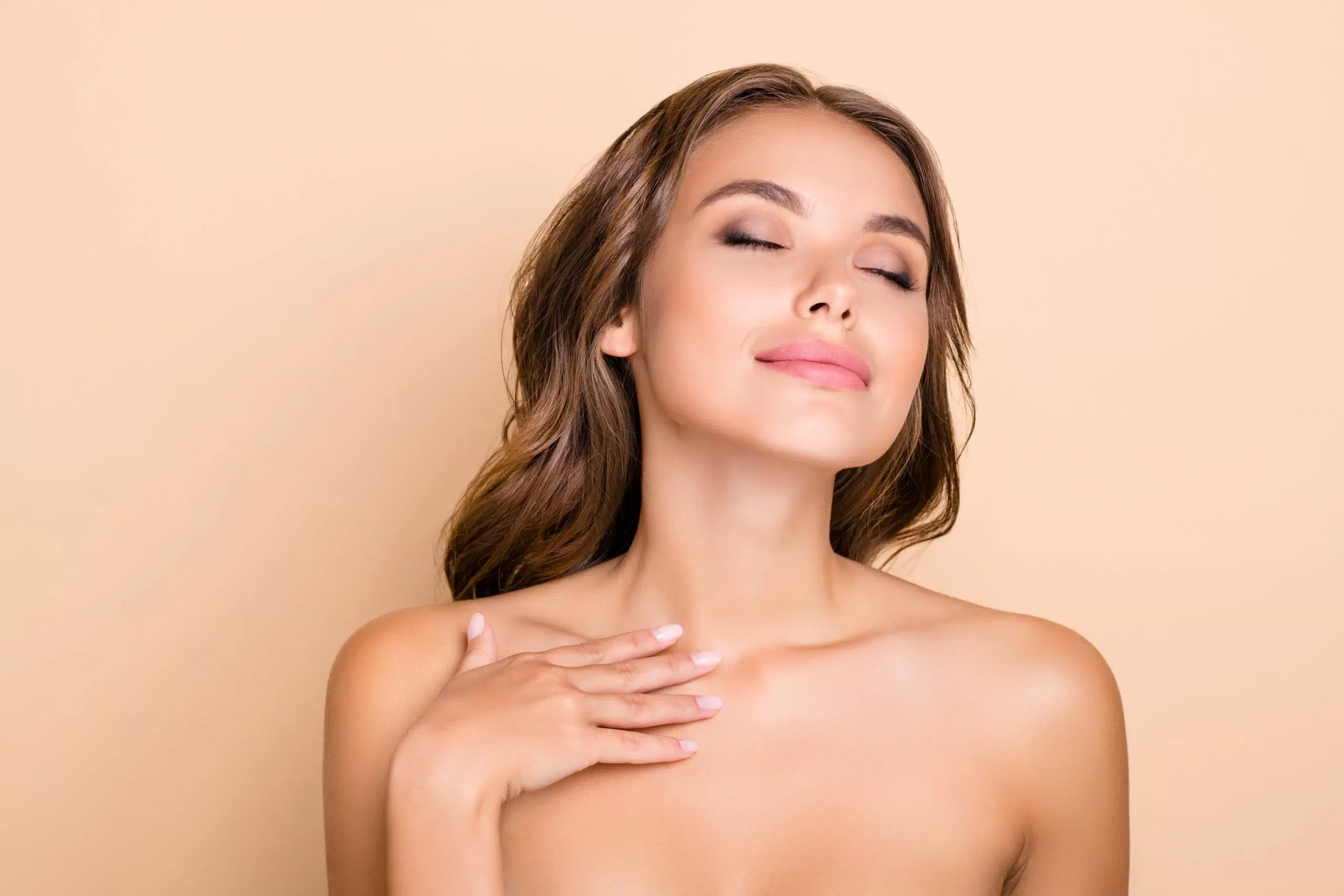
Chest Veins
Reveal Confidence
Smooth Out Chest Veins
Prominent chest veins can be a source of self-consciousness, especially in clothing that accentuates the upper body. Our advanced vein treatment options offer a safe, effective way to reduce the appearance of chest veins, restoring smooth, even skin tone. Whether it’s for cosmetic reasons or a boost in confidence, our team uses precise, minimally invasive techniques to achieve natural-looking results with minimal downtime. Step out with renewed confidence, knowing that your skin reflects the vibrant, healthy self you feel inside.

What are Chest veins
Chest veins are a normal part of the body’s network of veins, running just below the skin’s surface. For some people, these veins are more noticeable, especially if they have low body fat, well-defined muscles, or certain genetic traits. Factors like aging, hormonal changes, regular intense workouts, or even sun exposure can also make these veins appear larger or more visible. While prominent chest veins are generally harmless, some people may feel self-conscious about how they look and might consider treatments to make these veins less noticeable and create a smoother appearance.
Causes of breast & Chest veins
- Age: As you age, the skin becomes thinner and loses elasticity, making veins more noticeable. This is a natural part of the aging process.
Genetics: If visible veins run in your family, you are more likely to develop them as well. This hereditary factor can significantly influence the prominence of chest veins.
Hormonal Changes: Fluctuations in hormone levels, such as those occurring during pregnancy, menopause, or hormonal treatments, can cause veins suddenly to become more prominent.
Breast Veins: Hormonal changes, genetics, pregnancy, and breast implants can all contribute to the visibility of breast veins.
- Weight Loss: Rapid or significant weight loss can reduce the layer of fat beneath the skin, making veins more visible. This can happen when body fat decreases quickly, exposing the veins underneath the thinner skin layer.
Weight Gain: Rapid weight gain or loss can affect the fatty tissue under the skin, making veins more visible.
- Exercise: Regular vigorous exercise increases blood flow and can cause veins to become more prominent. This is because exercise leads to temporary dilation of veins to accommodate increased blood flow.
Medical Conditions: Certain medical conditions, such as liver disease, fluid accumulation in the abdomen, and increased abdominal pressure, can make veins more visible. These conditions may cause veins to become enlarged or more pronounced. Cases of visible veins can also be caused by conditions like spider veins, pregnancy, and aging.
Breast Cancer: Changes in breast size and shape, finding lumps, scaly skin, nipple discharge, or inverted nipples can be signs of breast cancer and should be evaluated by a healthcare professional.
Sun Exposure: Excessive sun exposure can damage the skin and make veins more visible. UV rays can thin the skin and break down collagen, leading to more noticeable veins.
Breast Augmentation: The visibility of chest veins can be affected by breast augmentation or significant weight gain. Pronounced veins on the chest area can cause distress, but solutions such as sclerotherapy treatments are available to address these concerns.
Breast & Chest Veins Removal
Not interested in surgery or looking for non-invasive ways to treat spider veins on your chest or breasts? We understand that surgery isn’t the right choice for everyone, so we offer a range of non-surgical treatments designed to effectively reduce the appearance of chest & breast veins without any need for invasive procedures. Our gentle, minimally invasive options are ideal for those wanting a safe, effective solution to smooth out spider veins, providing natural-looking, lasting results with little to no downtime.
Sclerotherapy
Sclerotherapy is one of the most popular and effective treatments for reducing the appearance of veins on the chest and breasts. In this procedure, a sclerosing solution is gently injected into the targeted veins, causing them to collapse and gradually fade from view. This minimally invasive treatment involves no downtime and delivers lasting results, making it a convenient choice for those seeking a smoother, more even skin appearance in these sensitive areas.
Vascular laser
Laser therapy uses focused light energy to effectively target and treat small veins on the chest and breasts, especially those close to the skin’s surface. The laser’s heat gently seals the veins, causing them to gradually fade over time. This treatment is ideal for smaller, superficial veins and provides a non-invasive option for achieving smoother skin in these areas.
risks & complications
Treating chest and breast veins with sclerotherapy and vascular laser therapy is generally safe when performed by an experienced professional, but like any medical procedure, it comes with potential risks and complications.
Sclerotherapy involves injecting a sclerosing solution into veins to collapse and fade them, but risks include temporary bruising, swelling, allergic reactions, hyperpigmentation, blood clot formation, and skin ulcers.
Vascular Laser Therapy uses focused light to close off veins, but risks include temporary redness, swelling, blistering, hyperpigmentation, and recurrence of veins. Both treatments can cause temporary skin changes, but laser therapy may not be a permanent solution and may reappear or form new veins.
What to Expect During Your initial consultation
During your initial consultation for breast and chest vein treatment at Laurel Clinical with Dr. Gilles Laur, you’ll experience a warm, professional approach tailored to your unique needs. Dr. Laur will begin by discussing your medical history, lifestyle, and any specific concerns or goals you have regarding the appearance of your veins. Following this, he will carefully examine the area, explaining the most effective treatment options, which may include non-surgical approaches like sclerotherapy or laser therapy. Dr. Laur will guide you through the expected outcomes, potential results, and any steps needed before and after treatment to ensure optimal care. This consultation is designed to make you feel informed and comfortable, providing you with a personalised treatment plan and peace of mind as you take the next steps toward achieving smoother, more even skin in a compassionate, expert setting.

Transformative Breast & Chest Veins removal Experience
with laurel clinical
At Laurel Clinical, Dr. Gilles Laur and our skilled team are dedicated to offering expert care and customized solutions for treating visible veins on the chest and breasts. Dr. Laur brings a wealth of experience in vein treatments, ensuring that each patient receives a tailored approach that considers their unique needs and cosmetic goals. We understand that every case is different, and we focus on delivering personalized care to help you achieve smoother, clearer skin and a boost in confidence.
Our clinic utilises the latest techniques and advanced technology, including ultrasound and specialised imaging tools, to ensure precision in each treatment. By thoroughly assessing underlying causes, such as feeder veins or deeper venous insufficiencies, Dr. Laur can address not only the visible veins but also the root issues that may be impacting vein health. This comprehensive approach helps reduce the chance of recurrence, providing you with a longer-lasting solution to improve the appearance of veins in these sensitive areas.


